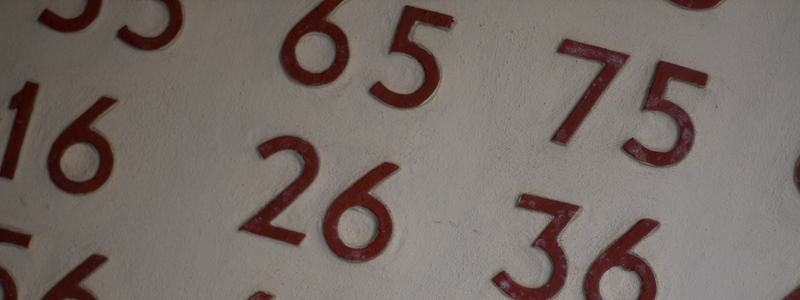
FRIDAY MORNING MANNA
February 6, 2015
Nathaniel Fajardo
Biblical Numerology: NUMBER TWO – Part XXII
ROME’S HATRED TOWARD THE TWO WITNESSES- Part III
“Errors like straws, upon the surface flow;
he who would search for pearls, must dive below.”- John Dryden
If today’s Christian mainstream only knew half of what and how the Christian Bible has survived and flourished till now, and why it has been the object of calumny and so much mysterious hatred, listen to what Lord Byron said: “The best of prophets of the future is the past.” In short, history will repeat itself. Study and fall in love with your Bible now. The days of liberty to heed its instructions and obey God’s immutable Decalogue according to the dictates of conscience through the Holy Spirit, are numbered.
“In the sixteenth century the Reformation, presenting an open Bible to the people, had sought admission to all the countries of Europe. Some nations welcomed it with gladness, as a messenger of Heaven. In other lands the papacy succeeded to a great extent in preventing its entrance; and the light of Bible knowledge, with its elevating influences, was almost wholly excluded. In one country, though the light found entrance, it was not comprehended by the darkness. For centuries, truth and error struggled for the mastery.
At last the evil triumphed, and the truth of Heaven was thrust out. ‘This is the condemnation, that light is come into the world, and men loved darkness rather than light.’ John 3: 19. The nation was left to reap the results of the course which she had chosen. The restraint of God’s Spirit was removed from a people that had despised the gift of His grace. Evil was permitted to come to maturity. And all the world saw the fruit of willful rejection of light.
“The war against the Bible, carried forward for so many centuries in France, culminated in the scenes of the Revolution. The terrible outbreaking was but the legitimate results of Rome’s suppression of the Scriptures. It presented the most striking illustration which the world has ever witnessed of the working out of the papal policy— an illustration of the results to which for more than a thousand years the teaching of the Roman Church had been tending.
“The suppression of the Scriptures during the period of papal supremacy was foretold by the prophets; and the Revelator points also to the terrible results that were to accrue especially to France from the domination of the ‘the man of sin.’ [2 Thess.2: 3, 4-12].”—The Great Controversy, “The Bible and the French Revolution,” ch., Ellen G. White, pp. 265, 266. Pacific Press Publishing Asso., Mt. View, CA., U.S.A. 1911.
Christian Edwardson in Facts of Faith, wrote:
“In 1522, Jacques Lefevre translated the New Testament into French, and Collin, at Meaux, printed it in 1524. In 1525, William Tyndale translated the New Testament into English. All these New Testaments were translated from the original Greek, and not from the imperfect Latin Vulgate, used by the papal church.
“Printing presses were kept busy printing the Scriptures, while colporteurs and booksellers sold them to the eager public. The effect was tremendous.
“‘Every honest intellect was at once struck with the strange discrepancy between the teaching of the Sacred Volume and that of the church of Rome.’ – ‘Historical Studies,’ Eugene Lawrence, p. 255. New York. Harper Bros , 1876.
“In the book of God there were found no purgatory, no infallible pope, no masses for the dead, no sale of indulgences, no relics working miracles, no prayers for the dead, no worship of the Virgin Mary or of the saints! But there the people found a loving Savior with open arms welcoming the poorest and the vilest of sinners to come and receive forgiveness full and free. Love filled their hearts and broke the shackles of sin and superstition. Profanity, coarse jests, drunkenness, vice, disorder disappeared. The blessed Book was read by young and old, and became the talk in home and shop, while the Church with its Latin mass lost its attraction.
The Inquisition and the Auto da fe. “Rome’s Fight. – Rome was awake to the inevitable result of allowing the common people to read the Bible, and the Vicar of Croydon declared in a speech at St. Paul’s Cross, London: ‘We must destroy the printing press or it will destroy us.’—‘The Printing Press and the Gospel,’ by E. R. Palmer, p. 24. The papal machinery was therefore set in motion for the destruction of the Bible.
“There now began a remarkable contest between the Romish Church and the Bible—between the printers and the popes . . . .To the Bible the popes at once declared a deathless hostility. To read the Scriptures was in their eyes the grossest of crimes. . . . The Inquisition was invested with new terrors, and was forced upon France and Holland by papal armies. The Jesuits were everywhere distinguished by their hatred for the Bible. In the Netherlands they led the persecutions of Alva and Philipp II; they rejoiced with dreadful joy when Antwerp, Bruges, and Ghent, the fairest cities of the workingmen, were reduced to pauperism and ruin by the Spanish arms; for the Bible had perished with its defenders . . .
“ ‘To burn Bibles was the favorite employment of zealous Catholics. Wherever they were found the heretical volumes were destroyed by active Inquisitors, and thousands of Bibles and Testaments perished in every part of France.’ –‘Historical Studies,’ Eugene Lawrence, pp. 254-257.
“In Spain, not only were the common people forbidden to read the Bible, but also university professors were forbidden by the ‘Supreme Council’ of the Inquisition to possess their valuable manuscripts.
“The Council, in consequence, decreed that those theologians in the university who had studied the original languages, should be obliged, as well as other persons, to give up their Hebrew and Greek Bibles to the commissaries of the holy office, on pain of excommunication.’ –‘History of the Inquisition of Spain,’ D.J.A. Llorente, Secretary of the Inquisition, p. 105. London. 1827.
“In 1490, Torquemada [the Inquisitor-General] caused many Hebrew Bibles and more than six thousand volumes to be burnt in an Auto da fe at Salamanca.’—‘Literary Policy of the Church of Rome,’ Joseph Mendham, M.A., p. 97. London, 1830.
“How many thousands of invaluable manuscripts thus perished in the flames of the Inquisition, eternity will alone reveal. It is exceedingly difficult for a Protestant [or mainstream Christian] in our days to fathom the extent of this fear of and enmity against the Bible, manifested by the Roman church. With her it was actually a life of death struggle! A person must read the history of the Inquisition, and examine the Roman Indexes of Forbidden Books, to understand her viewpoint> Inquisitor Perez del Prado gave expression to her [the Roman Church’s] feelings and her bitter lament when he declared in horror ‘ ‘that some individuals had carried their audacity to the execrable extremity of demanding permission to read the Holy Scriptures in the vulgar [common] tongue, without fearing to encounter mortal poison therein.’ ‘ – ‘History of the Inquisition of Spain,’ D. Juan Antonio Llorente, p.111.
“The funeral piles were lit all over Europe. Samuel Smiles says of France:
‘Bibles and New Testaments were seized wherever found, and burnt; but more Bibles and Testaments seemed to rise, as if by magic, from their ashes. The printers who were convicted for printing Bibles were next seized and burnt. The Bourgeois de Paris [a Roman Catholic paper] gives a detailed account of the humans sacrifices offered up to ignorance and intolerance in that city during the six months ending June, 1534, from which it appears that twenty men and one woman were burnt alive . . . . In the beginning of the following year, the Sorbonne obtained from the king an ordinance, which was promulgated on the 26th of February, 1535, for the suppression of printing!’—‘The Huguenots,’ Samuel Smiles, pp. 20, 21, and first footnote.
“Further attempts continued to be made by Rome to check the progress of printing. In 1559 Pope Paul IV issued the first Index Expurgatorious, containing a list of the books expressly prohibited by the Church. It included all Bibles printed in modern languages, of which forty-eight editions were enumerated; while sixty-one printers were put under a general ban.’ —Id., p. 23.
“Paul IV, in 1559, put it [Sully’s] name in the first papal Index Expurgatorium.’—‘History of the Inquisition of the Middle Ages,’ Henry Charles Leo, Vol. III., p. 587.
“The first Roman ‘Index of Prohibited Books’ (Index librorum prohibitorum), published in 1559 under Paul IV, was very severe and was therefore mitigated under that pontiff by decree of the Holy Office of 14 June of the same year.’ –‘Catholic Encyclopedia, Vol. VII, p. 722, art. ‘Index’’
“Persecution raged more or less all over Europe: ‘In 1545, the massacre of the Vaudois of Province was perpetrated’; the 24th of August, 1572, the St. Bartholomew Massacre commenced, and continued until between 70,000 and 100,000 innocent and unsuspecting persons were murdered in cold blood for being Protestants. The massacre was secretly planned by the leaders of the Roman church.
“Sully says 70,000 were slain, though other writers estimate the victims at 100,000.’ —‘The Huguenots,’ Samuel Smiles, pp. 71, 72.
“Catherine de Medicis wrote in triumph to Alva, to Philip II, and to the Pope . . . Rome was thrown into a delirium of joy at the news. The canons were fired at St. Angelo; Gregory XIII and his cardinals went in procession from sanctuary to sanctuary to give God thanks for the massacre. The subject was ordered to be painted, and a medal was struck, with the Pope’s image on one side, and the destroying angel on the other immolating the Huguenots.’ – Id., 71, 72.—“Facts of Faith,” Christian Edwardson, pp. 14, 15, 16. (Revised). Southern Publishing Association, Nashville 8, TN. U.S.A. 1943.
The foregoing is a very brief history of Rome’s mysterious hatred toward the “Two Witnesses” of Revelation chapter 11—which culminated in the French Revolution (1793-1797), which we are focusing on in this series.
(To be continued next week)

